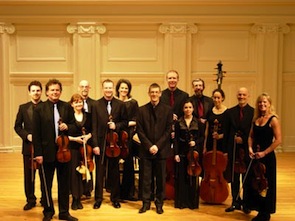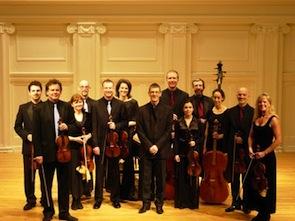
One of the great things about the San Francisco Early Music Society’s concert series is that it gives exposure to emerging ensembles and new collaborations. On Saturday at St. John’s Presbyterian Church in Berkeley, I heard the Baroque Band, a Chicago string ensemble formed in 2007 by violinist Garry Clarke. The program, titled “Charlie’s Angels,” offered to re-create the music of the court of British monarch Charles II (reigned 1661–1685) during the period known as the Restoration. The king, seeking to emulate the French court, had established his “24 Violins of the King.” In spite of credible and solid playing, however, the eight-person Baroque Band was unable to muster the forces needed to bring to life the splendor of the royal ensembles. The concert’s overall impact was further marred by some poor programming choices.
Although American history courses often emphasize how the Puritans sought religious freedom in America, they actually formed something of a religious right, opposing most liberties. When they eventually got their own way in Britain from 1649 to 1660, the “Commonwealth” turned into a complete and total disaster. In the arts, prudishness reigned. Large-scale musical output ceased: Most large musical institutions were disbanded, organs and sheet music were burned, public theaters were closed, and even private entertainment was censored. (In Boston, theaters were illegal into the 1790s.) When the Commonwealth collapsed and the King was invited back from his exile in France, court, church, and dramatic musical institutions had to be rebuilt from scratch. The previous prudishness gave way to permissiveness on the dramatic stage, along with a cultural revival.
This Musick Doth Not a Concert Make
In Berkeley, the Baroque Band performed four suites of incidental music from various plays performed in this Restoration era: Congreve’s Double Dealer (to music by Purcell), Rochester’s Valentinian (Grabu), Shakespeare’s Tempest (Locke), and Milton’s Comus (Lawes). As Clarke told his audience in jest, “Our goal was to keep every piece in the second half under one minute.”
A few more players would have smoothed over these bumps.
A forty-five-second hornpipe followed a minute-long galliard, which was followed by a superfluous jig, ad nauseam. Unfortunately, this gave the concert an unfocused effect that I more commonly encounter in choral programs. These scenic and transitional fragments were never designed to capture an audience’s attention in and of themselves for long periods. The sense of fragmentation continued when the ensemble paused for applause, and introduced several works by Purcell and John Blow that had been composed to a repeating, or “ground,” bass. In programming, it helps to provide an anchor — a larger, more complex, more involved work — to set and center a concert’s theme, as well as to perform multiple genres of works.
With only eight players, the Band lacked a violone (double bass), or an instrument or two besides the harpsichord to fill out the continuo and add variety to the texture. Although I am sympathetic to touring economics, these were sadly missed. And while the stylistic differences between Grabu’s frenchiness and Lawes’ counterpoint were readily apparent, the unchanging sonority made them sound more alike than anything else. This sparse instrumentation and the mild reverberation of St. John’s Presbyterian also magnified every imperfection. A few more players would have smoothed over these bumps.
To Clarke’s credit as a violinist, he led his band from his fiddle with a strong sense of how strings work, and his players seemed sophisticated and disciplined. His interpretations tended to be very straightforward and brisk, and he preferred the music to speak for itself. This is a matter of personal taste, but for familiar works, sometimes an interpretive conceit can help. With Clarke, Purcell’s famous chacony in G minor comes off as a bright, grand gesture, but in other hands — most notably Philharmonia Baroque’s Nicholas McGegan — the work can be milked for an intense melancholy.
Sometimes, solidly academic programming should take a backseat to creativity.
For Clarke and his Baroque Band, sometimes giving attention to the space between each piece of music could have made all the difference. After all, transitions, flair, and compelling showmanship are part of performance, too. Admittedly, Restoration chamber music seems to work better in the drawing room and on recordings than in a concert hall, since the larger operatic and religious works of the time require considerably larger forces. Still, there are possibilities to break the monotony. All these Restoration plays included solo songs, so why not bring out a singer? Why not feature a suite for virginal? Why not perform genuine French music to trace the origin of these styles? Or why not switch between violins and viols? Sometimes, solidly academic programming should take a backseat to creativity.

